During November, Australian households were even more eager to have a solar power system installed as soon as possible. Find out more in the latest auSSII report.
Solar Power System Capacities
77% of Australians using the SolarQuotes service in November selected 5-10 kW capacity as their desired system size range when presented with 3-5 kW, 5-10 kW, 10-15 kW, 15-20 kW, 20+ kW and “Fill Roof” options. This was up on October’s 75%.).
21% were wanting either bigger systems or to fill their home’s rooftop with solar panels compared to 22% in October.
On a related note, pick up some tips from SQ Founder Finn on solar power system sizing.
Intended Purchase Timeframe
The eagerness of Australians to get solar panels on their rooftop as soon as possible continued to grow in November, with close to 27% ready to purchase a system immediately; compared to 24% in October, 23% in September and 22% in July and August. A further 31% were wanting to buy a solar power system within 4 weeks (32% in October).
Aside from electricity price rises, some of this added enthusiasm was likely fuelled by a scheduled solar rebate reduction in January next year. But if you haven’t been able to get a system installed in 2022, panels will still be a great investment in 2023.
Price Vs. Quality
As has been the case for the previous few months, in November just under 12% wanted a high-end system (most expensive). 82% were after a system offering a good balance of price and quality (81% in October) and the remainder a good budget system.
For a general guide on current price ranges for fully-installed good quality systems, view our solar panel costs page. If you’d like to delve into historical average pricing over the last couple of years on systems of various sizes and all quality types, see the SQ Solar Price Index.
Cash Or Finance Purchase?
Even with the solar rebate that can knock thousands off the cost of installing panels, finding the up-front cash needed to buy a system can be a challenge. Solar finance can be a good way to get a system installed, but it needs to be approached carefully – and this includes in relation to “buy now, pay later” (BNPL) solar arrangements.
In November, just under 9% of Australians seeking quotes via SQ indicated they wanted finance. A little more than 41% were cash buyers and half wanted to review options for both. These results have been similar over the last few months.
Panel Level Optimisation (PLO)
Panel Level Optimisation (PLO) or Module Level Power Electronics (MLPE) involve small advices attached to each solar panel that can help you squeeze the most out of a system, plus provide some other benefits. The most common PLO devices are optimisers and microinverters.
During November, 17% of prospective solar buyers wanted more information on these options (16% in October and approximately 18% in September and August).
Advanced Solar Monitoring Interest
Advanced solar monitoring, aka consumption monitoring, goes beyond what most solar inverters offer in terms of reporting, enabling you to see grid and self-generated solar energy consumption in real time. This optional extra can also provide other information that can act as an early warning or assist with troubleshooting a poor performing system. It’s well worth considering when buying a system.
Last month, just shy of 34% of quote enquiries indicated interest in advanced monitoring – down a little on both October (~35%) and September/August (~36%.)
Battery Ready Systems
While AC or DC coupling means a home battery can be retrofitted to just about any solar power system ever installed, it’s handy for a prospective installer to understand your future energy storage intentions as this may assist with solar system design.
Interest in battery-ready systems dropped back to just under 5% in November, after nudging towards the 6% mark in October.
Solar + Battery Installation
Having a home battery installed at the same time as a solar power system was the intention of close to 22% of solar shoppers again in November..
Solar batteries offer a number of benefits; including protection from blackouts (if you choose the right one) and increases in energy prices and changing tariff structures. But buying a solar battery involves a big investment and careful consideration is needed – avoid the top mistakes home battery buyers make.
Envisioned Main Battery Use
The main reason noted for buying a battery were:
- Backup: 4% (5% in October and September)
- Minimising grid electricity use: 36% (37% in October and September)
- Both purposes: 60% (58% in October and September)
Power Bills Before Solar Installation
In terms of electricity bills before a solar installation and where costs were known, 49% reported paying $500 to $1,000 a quarter on average for mains power; same as October. Just over 12% indicated bills of more than $1,000 a quarter; down on October’s 13%, but still up on September’s 11%.
With summer now upon us, more expensive electricity and more electricity price rises on the horizon, it will be no surprise to see the proportion in the $1,000+ bracket rise.
About The auSSII
Thousands of Australians request quotes from SolarQuotes’ network of carefully pre-vetted installers each month, and the auSSII is compiled from information they provide.
Australian Buyers Looking For Quality Installers
If your solar business has a strong focus on quality in all areas of its operations, then SolarQuotes has eager buyers wanting to hear from you. Learn more about acquiring solar sales leads.

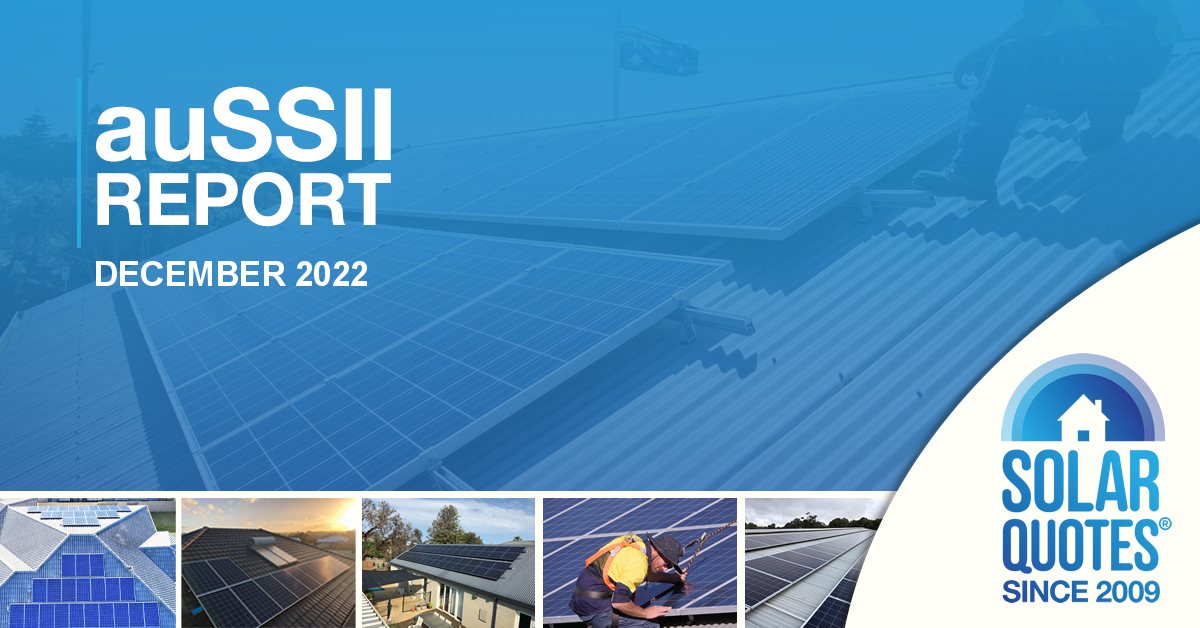
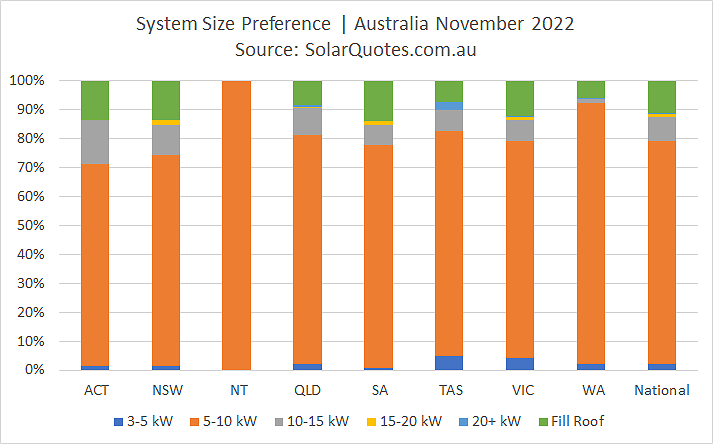
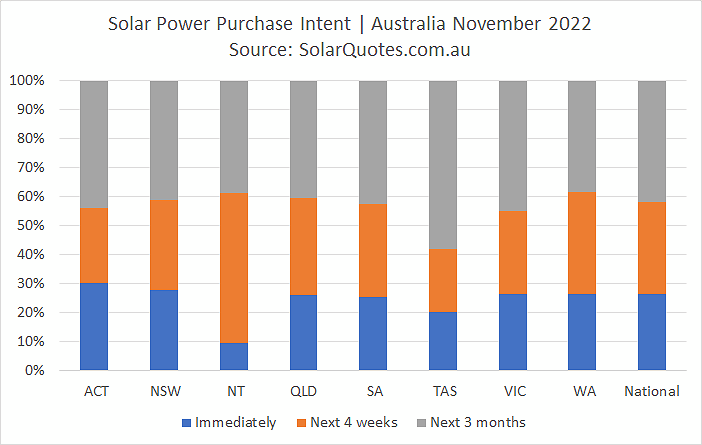
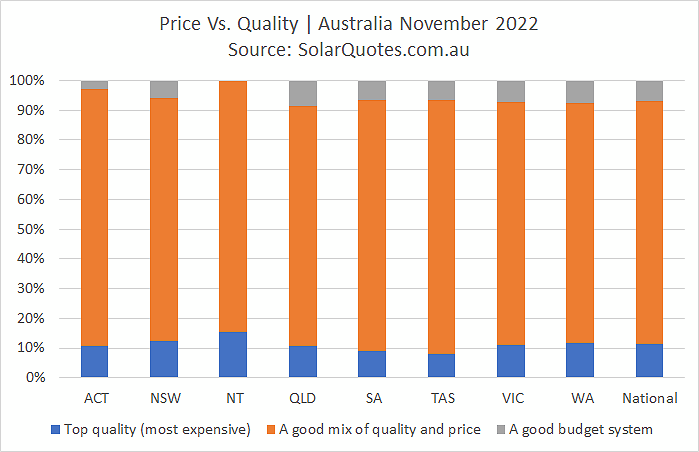
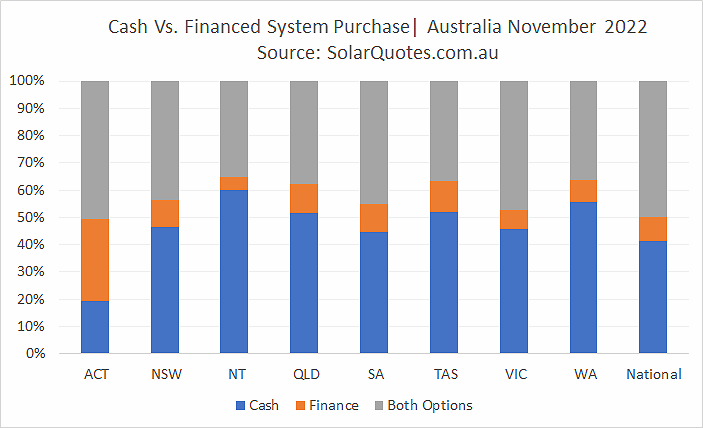
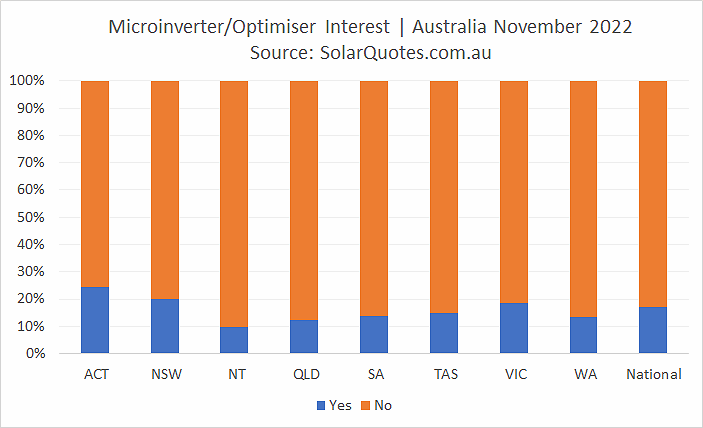
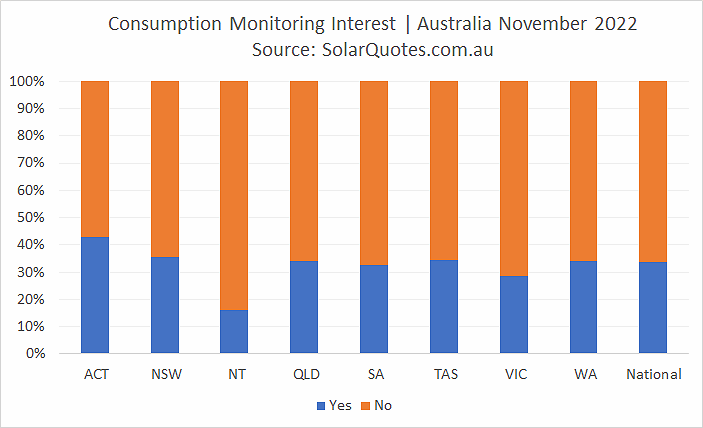
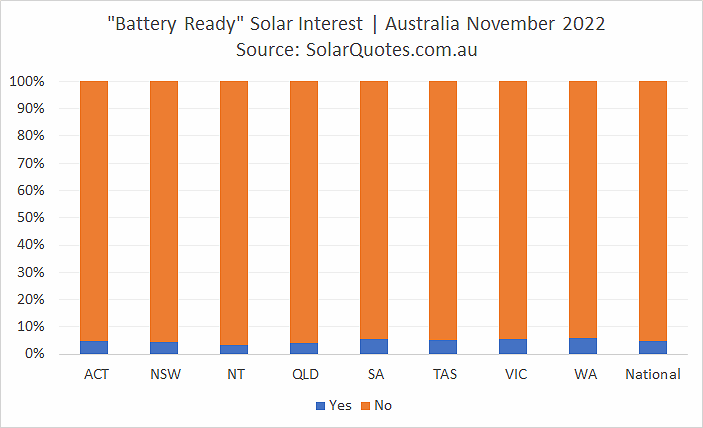
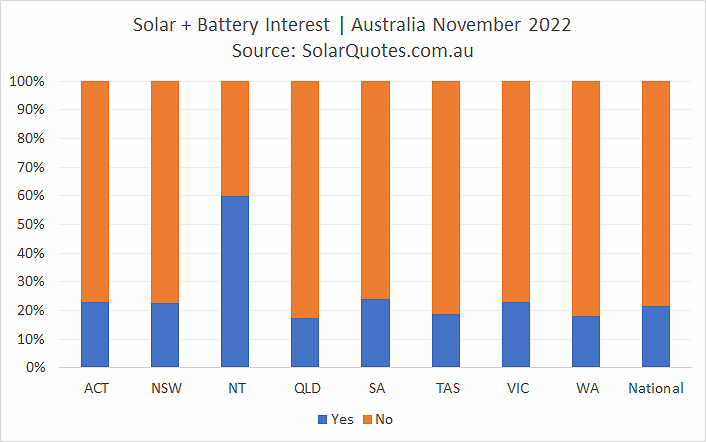
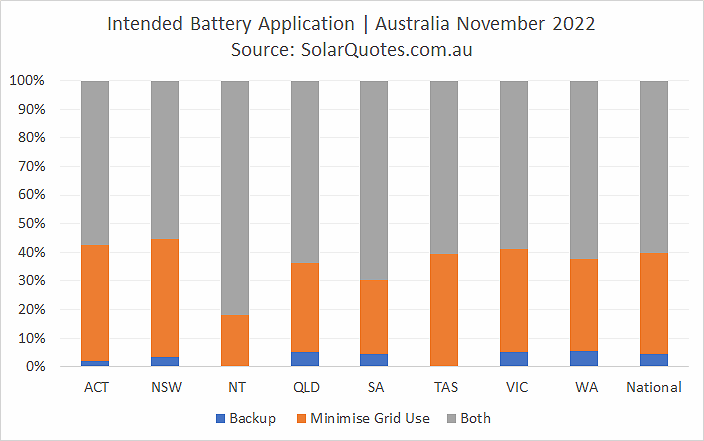
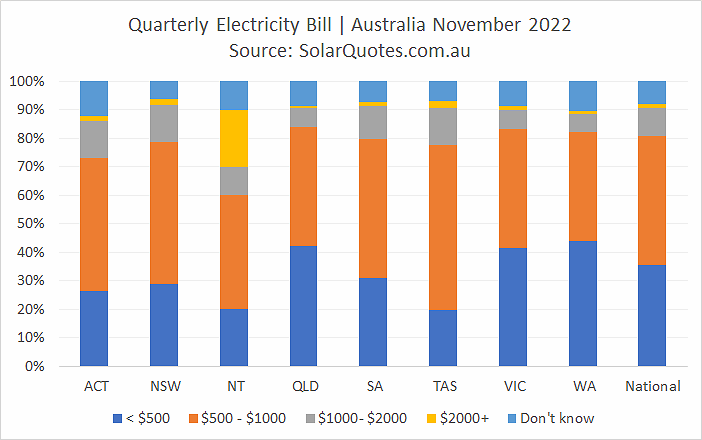
 RSS - Posts
RSS - Posts



Speak Your Mind